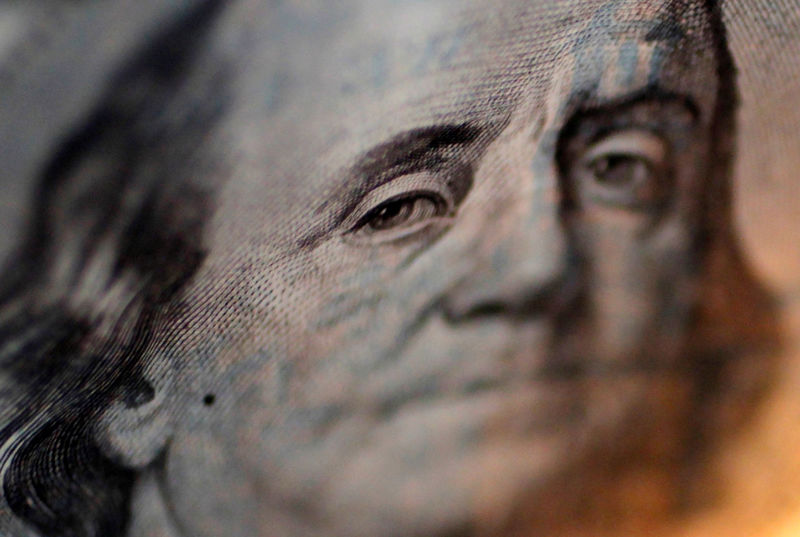Bitcoin price today: gains to $120k, near record high on U.S. regulatory cheer
Investing.com - The U.S. dollar edged higher Monday, and the euro retreated, after U.S. President Donald Trump threatened to impose a 30% tariff on imports from the European Union, although movements have been fairly muted.
At 05:30 ET (09:30 GMT), the Dollar Index, which tracks the greenback against a basket of six other currencies, rose 0.1% to 97.577, having added nearly 2% last week - the biggest weekly gain since early December.
Dollar gains on trade tariffs
U.S. President Donald Trump announced over the weekend he would be introducing 30% tariffs on imports from Mexico and the European Union.
These tariffs will be effective from August 1, giving the targeted countries less than three weeks to reach a trade deal with Washington, after having postponed a deadline from July 9.
The dollar has gained following the announcement, but the moves have been fairly muted, certainly when compared to the manic sell-off that followed April’s "Liberation Day" announcement.
“The moves have not been larger since investors see these threats as a Washington negotiating tactic to push the other side over the line into a deal,” said analysts at ING, in a note.
“Our baseline assumes that better deals than this get agreed by the 1 August deadline and that we are not going to see a repeat of the early April market shock in response to Liberation Day tariffs.“
There are a number of other factors which could impact the dollar this week, including the release of June U.S. CPI figure on Tuesday and the potential for fresh sanctions against Russia.
“Look out for the announcement of any secondary sanctions on those countries buying Russian oil,” ING added. “A jump in energy is good news for the energy-independent U.S. (and the dollar) and negative for the big energy importers in Europe and Asia.”
Euro slips to three-week low
In Europe, EUR/USD fell 0.1% to 1.1683, with the single currency falling to a three-week low earlier Monday after Trump’s threat of 30% tariffs on imports from the European Union.
European Commission President Ursula von der Leyen described the tariffs as unfair and disruptive, but indicated that the EU would extend its suspension of countermeasures to U.S. tariffs until early August and continue to press for a negotiated settlement.
“Those waiting for better levels to buy EUR/USD could be rewarded for their
Patience,” said ING. “U.S.-EU trade negotiations look set to get noisier over the coming weeks, and baseline expectations that the EU secures a 10% tariff rate on most goods could be challenged.”
GBP/USD dropped 0.2% to 1.3476, falling to a two-week low in a continuation of selling after data released late last week showed that Britain’s economy contracted for a second month running in May.
“Investors seem to be taking a dimmer view of sterling, presumably on the back of the fiscal straitjacket currently trapping U.K. Chancellor Rachel Reeves,” said ING.
Asian trade muted
Elsewhere, USD/JPY rose 0.1% to 147.21 and USD/CNY traded largely unchanged at 7.1682, as investors remained sidelined amid a flurry of U.S. trade tariff announcements and positive trade figures from China.
In China, data showed that the country’s trade surplus rose above expectations in June, boosted by stronger-than-forecast exports amid mutual tariff cuts with the U.S.
